Whether you are an art lover, cultural enthusiast or just a curious person visiting museums – the National Museum in Cebu holds a promising journey through art and history. It is a wonderful place to immerse in its culture, art and rich history as it captures the enriching culture, art forms, heritage, and the natural wonders of Cebu.
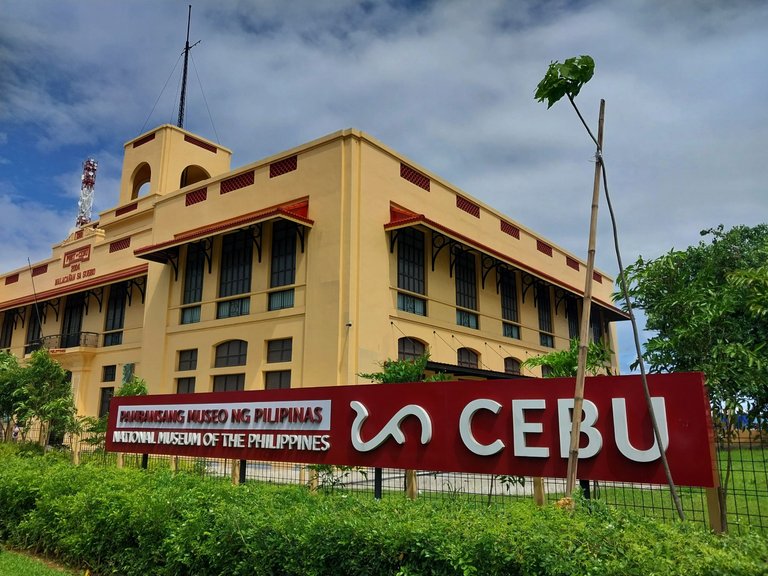
It was Saturday when we went to the City and the National Museum is open from 9:00 am to 5:00 pm on Tuesdays until Sundays; this was an opportunity we could not miss hence we decided to take a visit.

The National Museum of Philippines - Cebu recently opened last year on the first date in August. It is hosted in the building Aduana or the Custom House, and was previously known as ‘Malacañang sa Sugbo’. This art museum is in Plaza Independencia in the City’s shipping district on Quezon Boulevard, Pier Area in Cebu City.
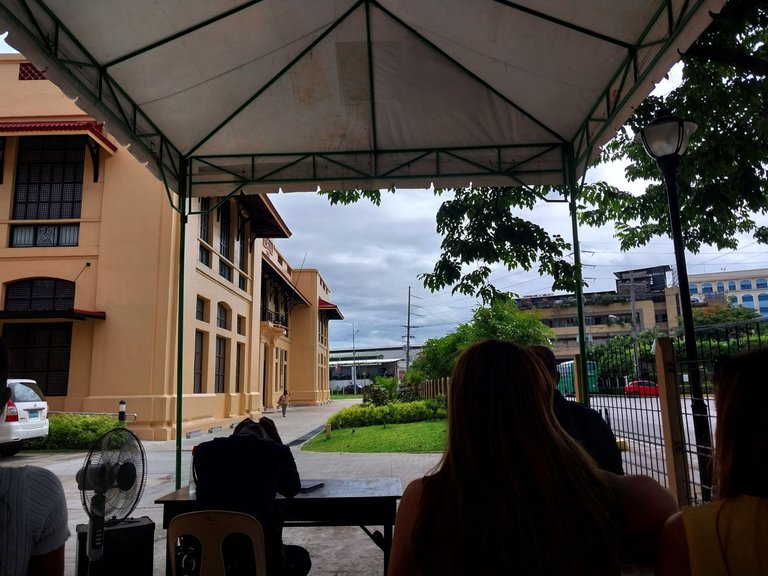
Before entering the museum, you have to sit beside the main entrance and wait for a batch of people to fill in the vacant seats so they can give the rules and regulations. When all the seats were occupied, the guard signaled us to go to the entrance door.

We lined up inside to list our names and the curator reannounced the guidelines to us again. After conducting the proper protocols, they let us leave and wander on our own.
The museum has five distinctive galleries with the theme:
- Kinaiyahan: Cebu’s Natural Wonders
- Ang Karaang Sugbo ug ang mga Kabiling Bahandi
- Paglawig: Cultural Movement Across the Seas
- The Philippine Center New York Core Collection of 1974
- Ang Kamamugnaon ug Kinaadman ni Maestro Tinong
"Kinaiyahan: Cebu’s Natural Wonders" was our first stop. This gallery exhibits Cebu's animal species, geological formations, and endemic species.
Cebu Tamaraw
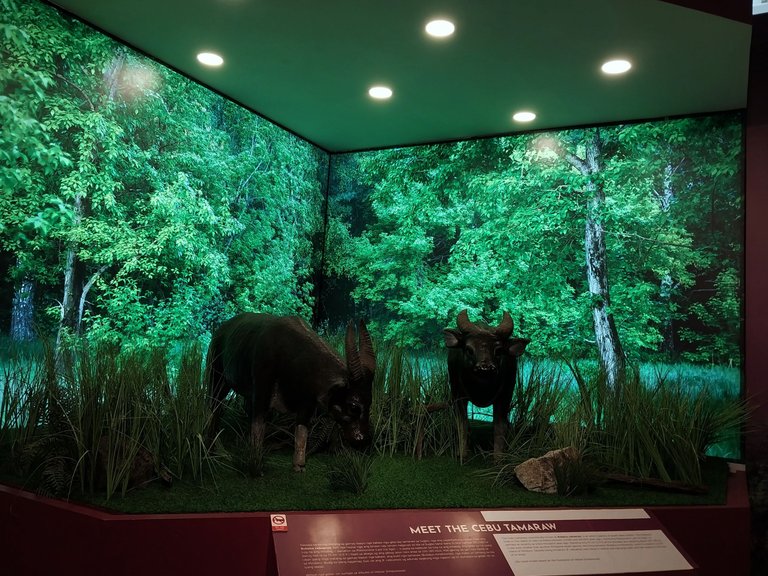
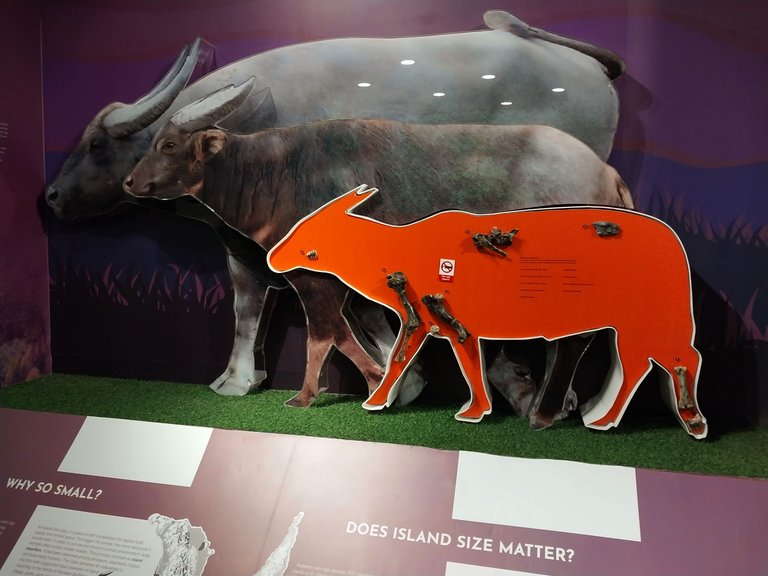
Displayed here is the life-sized model illustrated by Simeonovski. A dwarf water buffalo species which is extinct known scientifically as Bubalus cebuensis is believed to have lived on the island for ten to one hundred thousand years (during the Pleistocene) ago.
Igneous and Metamorphic Rocks
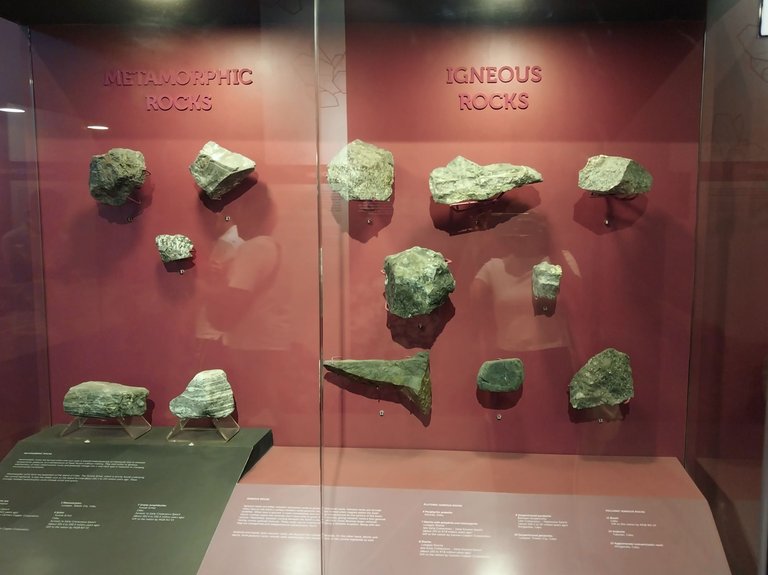
These are the various types of igneous and metamorphic rocks that are discovered in Cebu.
Cretaceous Period Sedimentary Rocks

Over here can be found a wall of rocks calculated to have existed 66 million years ago.
The Energy Resources
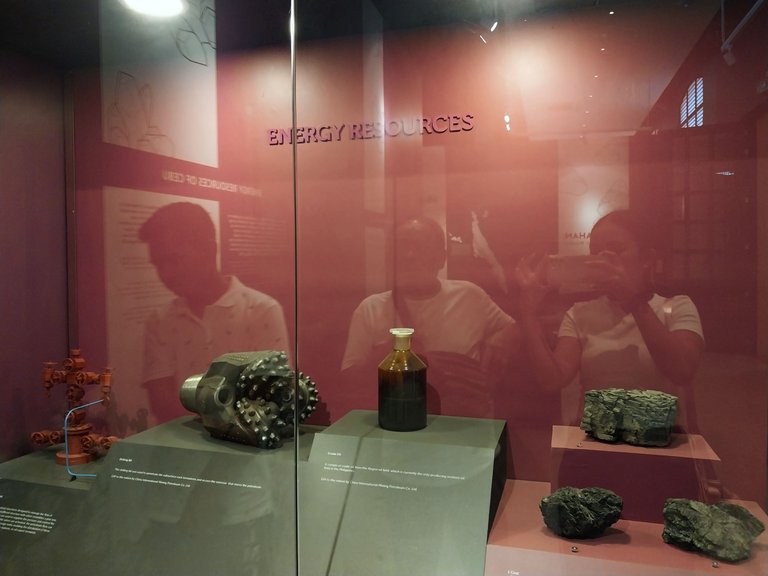
Along the lane, you can find energy resources from around the Region.
Coal

These rocks are metamorphosed over time by heat and pressure, which converts them into coal.
Crude Oil
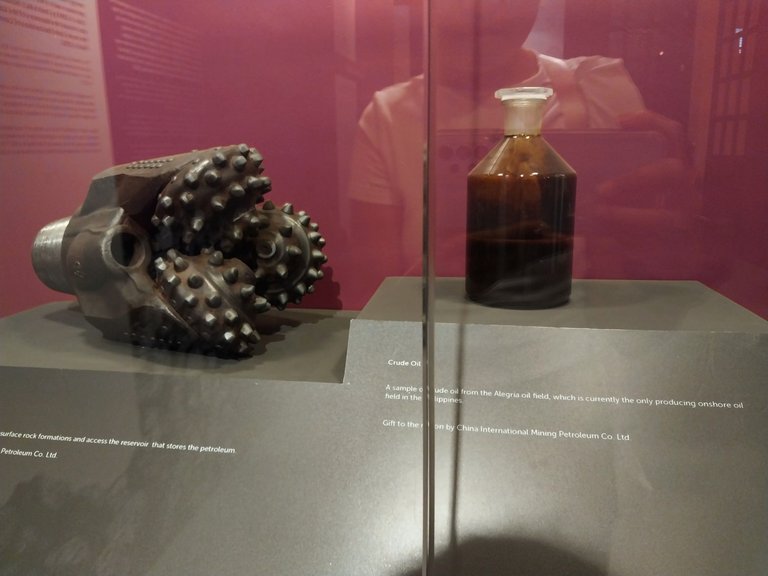
This is a sample of crude oil from the Alegria oil field. It is the only producing onshore on-field in the Philippines, as of now.
Replica of an Oil Well
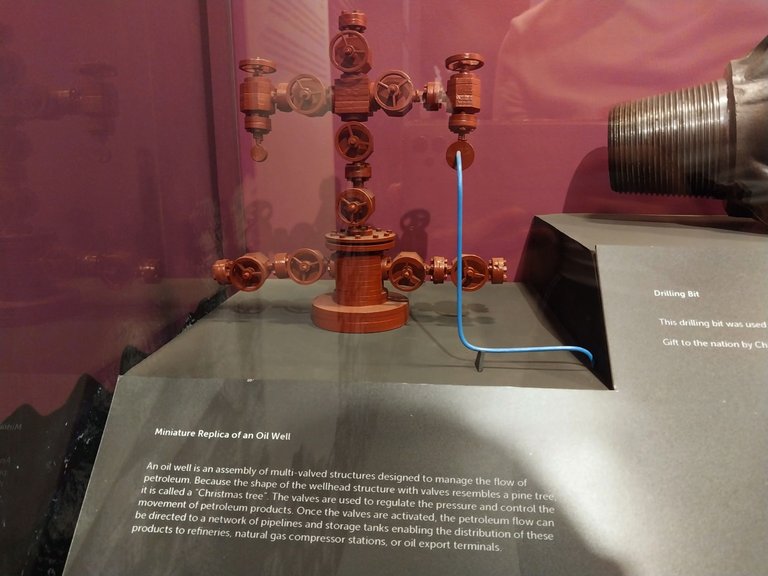
This structure is designed to manage the flow of petroleum distribution to refineries, natural gas compressor stations, and oil export terminals.
Rocks and their Products

I was in awe of this section. It shows a kind of rock in the front and when you pull the lever string in front of it, it will rotate and reveal a product of that rock.
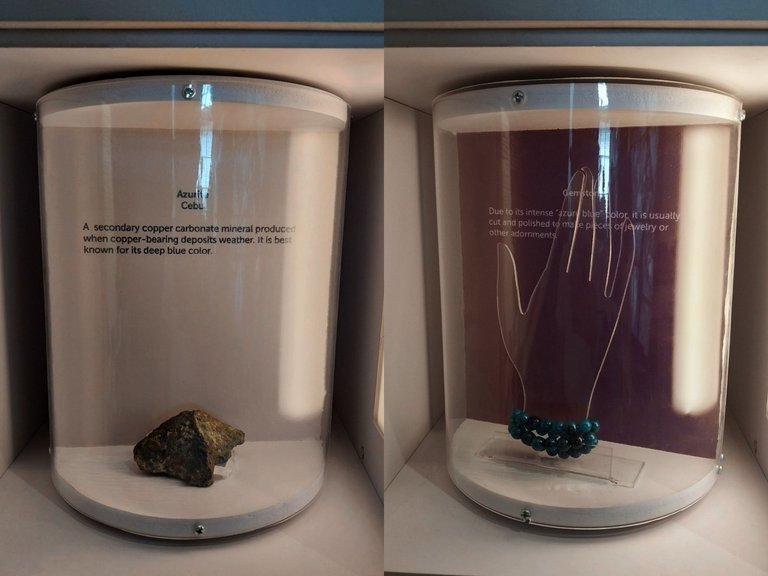
An example is this Azurite rock (known for its deep blue color) used as a material to create the blue gemstones.
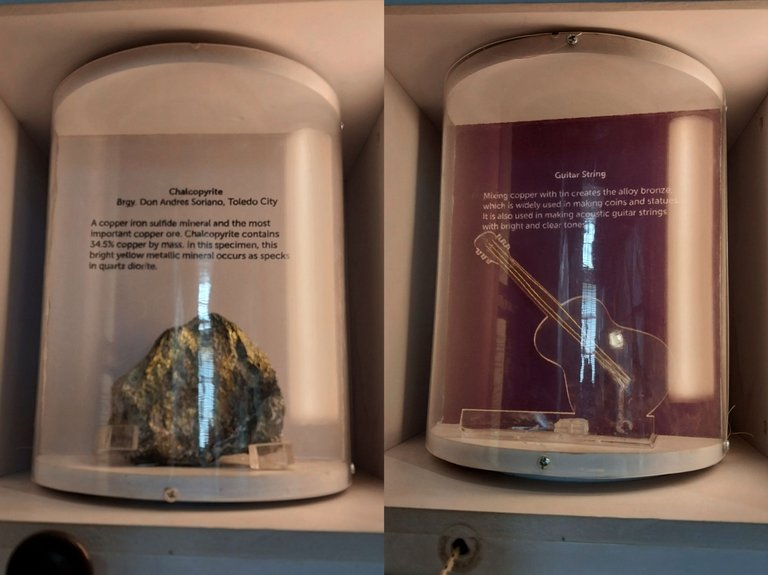
Another example is Chalcopyrite, the most important Copper Ore used as a material to formulate a Guitar String.
Rudist-Bearing Limestone Boulders
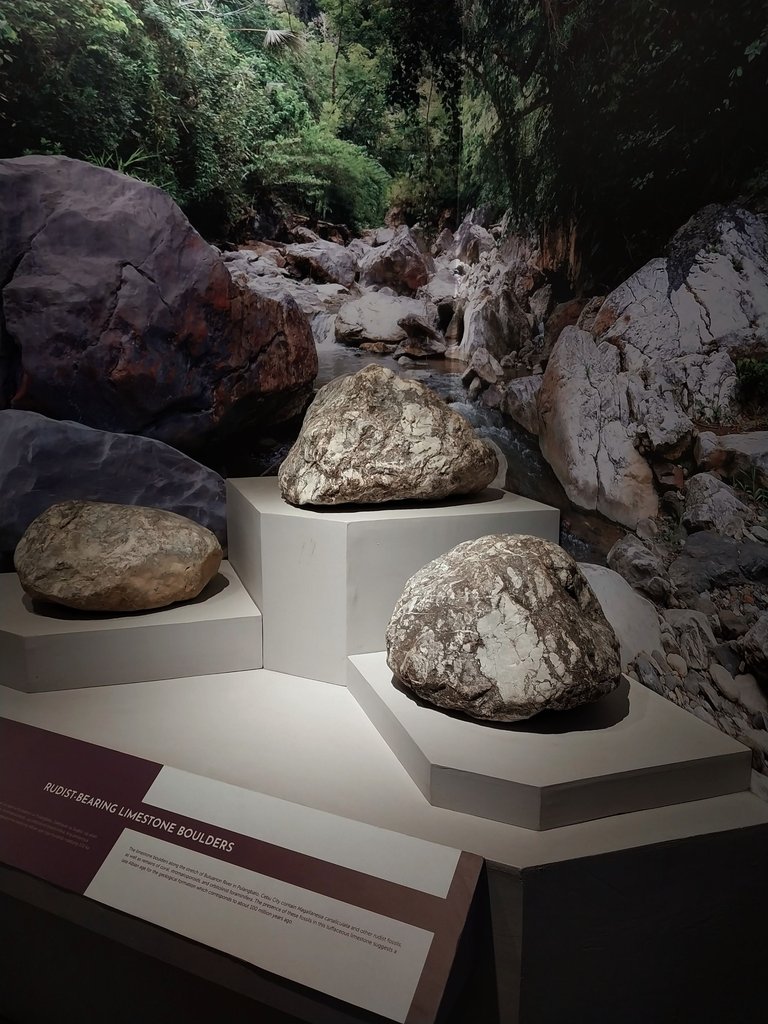
This was found along the Butuanon River in Pulangbato, Cebu City. The existence of these fossils in this tuffaceous limestone suggests it was formed in the late Albian age about 100 million years ago.
Various types of fossils
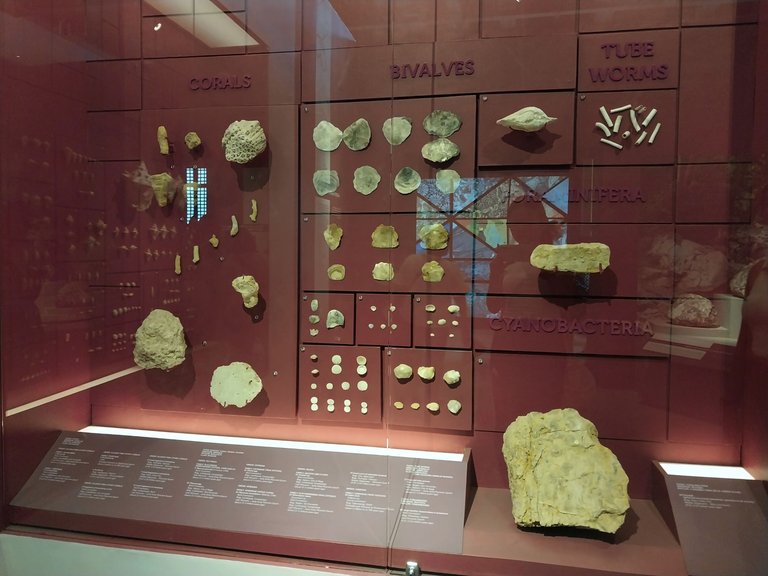
Exhibited in this area are the different groups of various fossils.
Philippine pygmy fruit bat
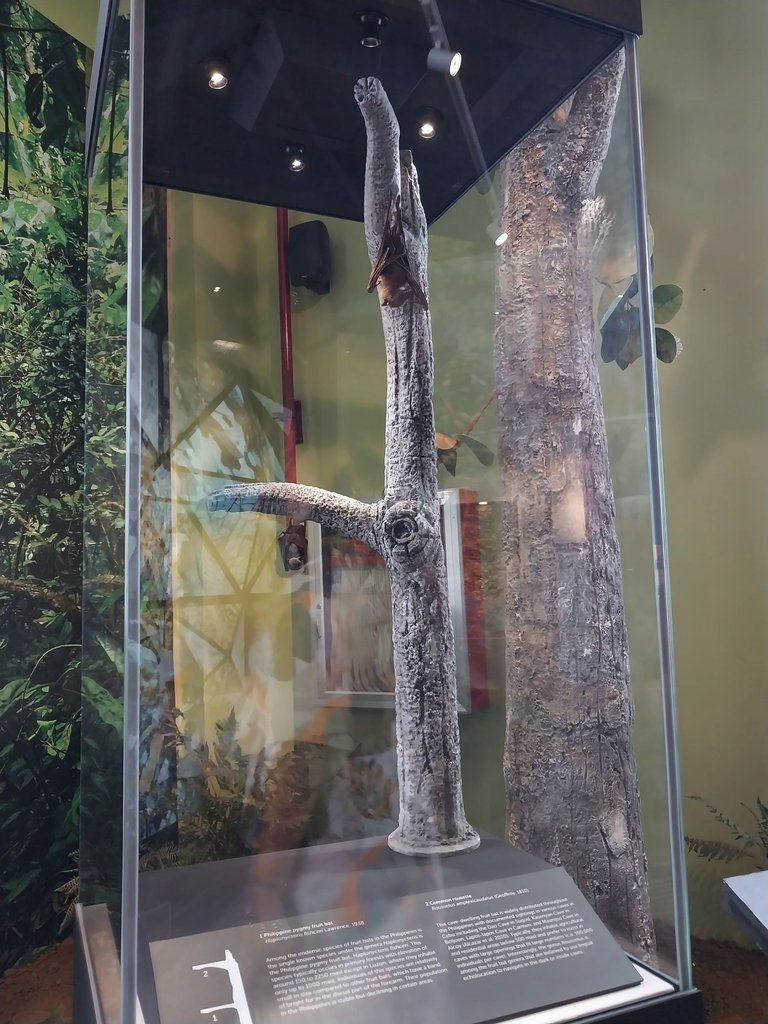
Endemic Plants
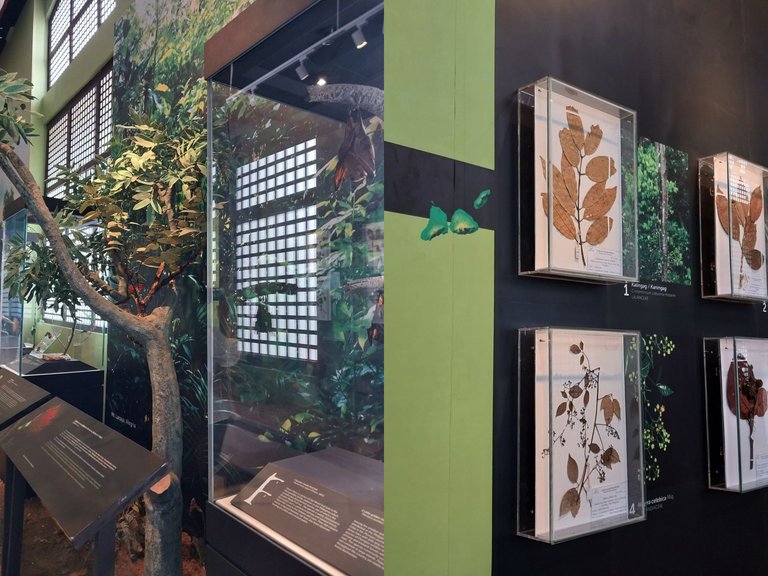
Philippine pygmy fruit bats and these endemic Plants are some of the endemic species found in Cebu.
The Philippine Duck
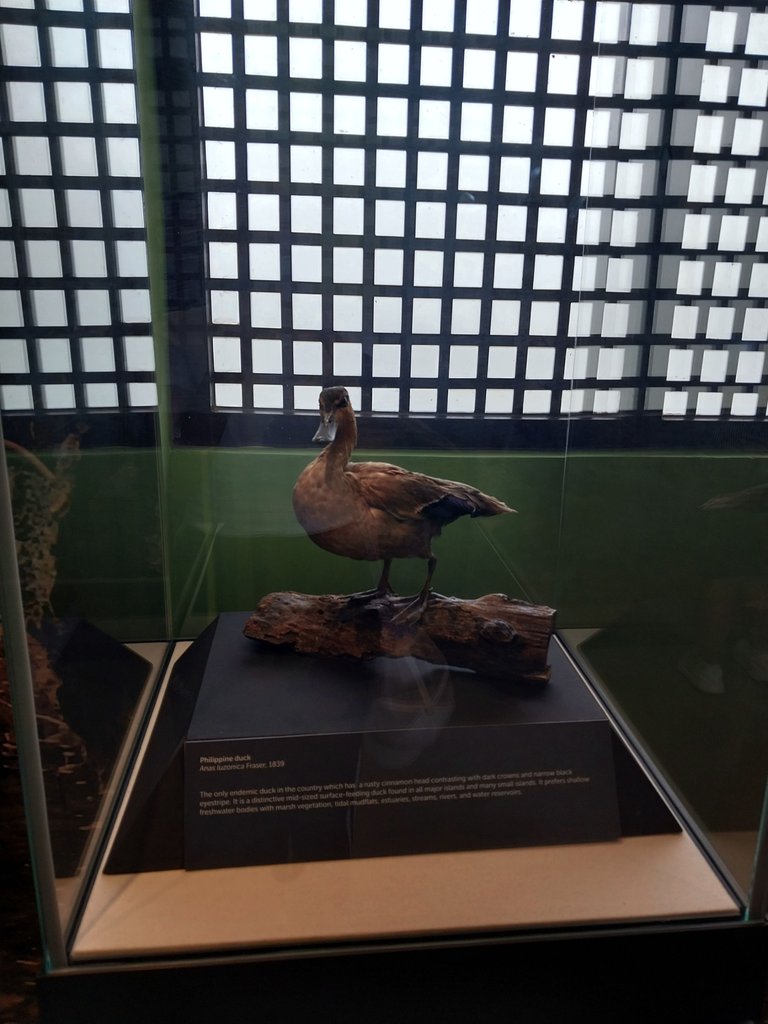
The only endemic duck in the country with a rusty cinnamon head contrasting with dark crowns and narrow black eyestripe.
Coral Reef Community
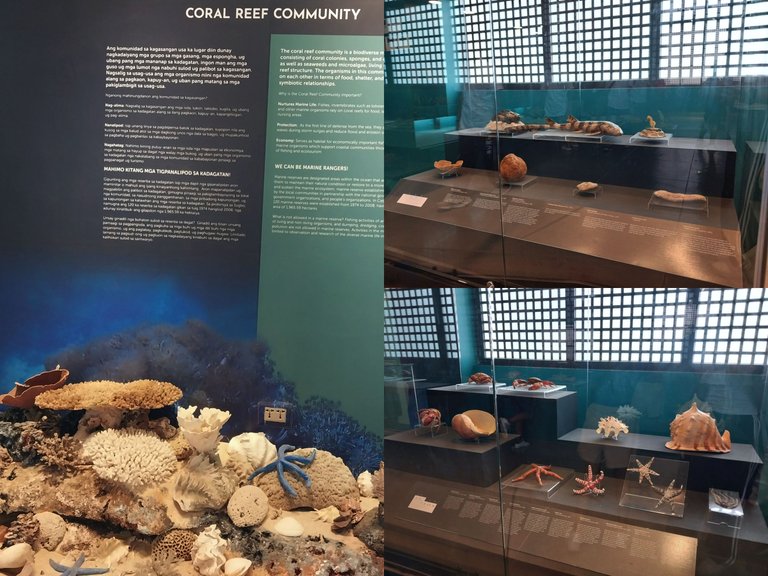
This is the marine ecosystem of Cebu abounding with different types and forms.
Great whale shark
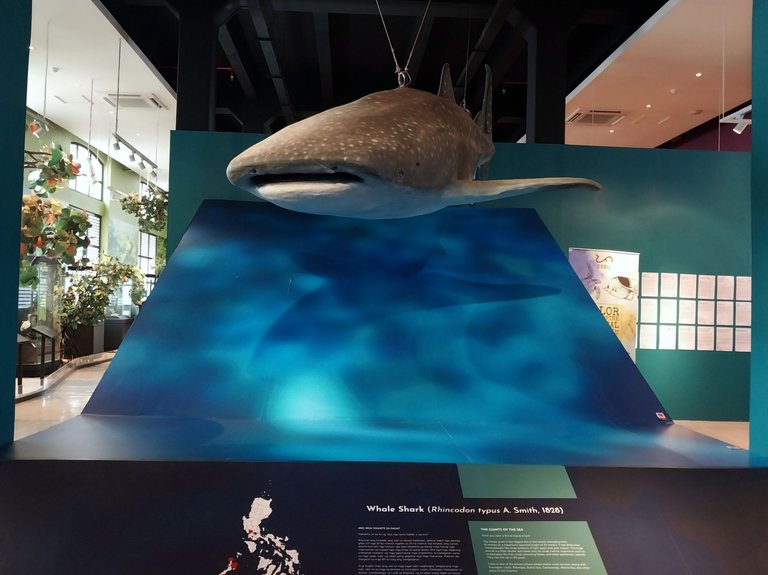
It goes by the scientific name Rhincodon typus which is also called the giant of the sea.
On the way to our next stop, is the exhibit with the theme: "Ang Karaang Sugbo ug ang mga Kabiling Bahandi"
National Archives of the Philippines (c.1882)
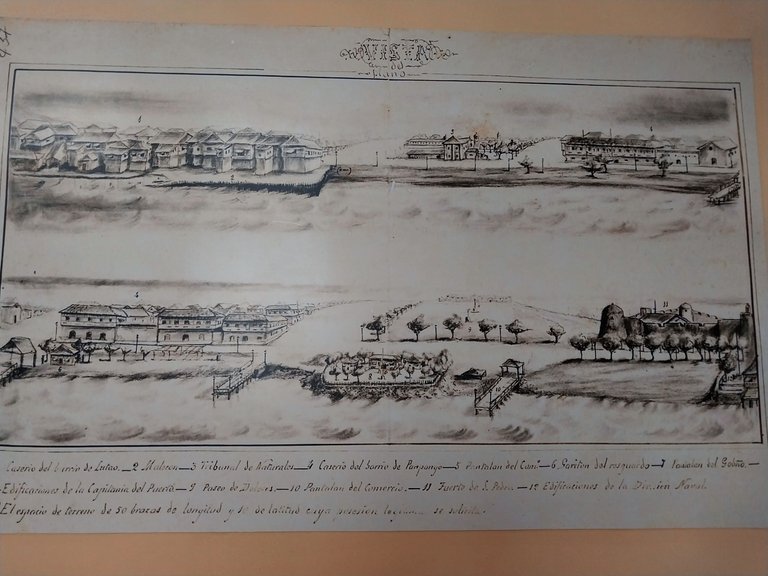
Map of Cebu City with its site plan in the year 1699
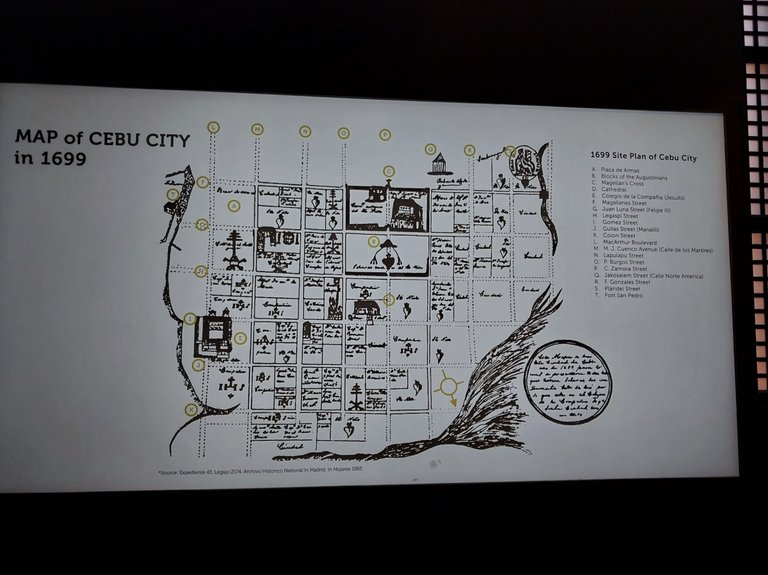
It shows the calculated development of Cebu. Indeed, Cebu City is the oldest city in the Philippines.
A secondary burial jar with a cover

This jar was recovered at an archaeological site in San Remegio, Cebu by archeologists. The jar is shaped like a "kasing" or a spinning top.
Gold death mask
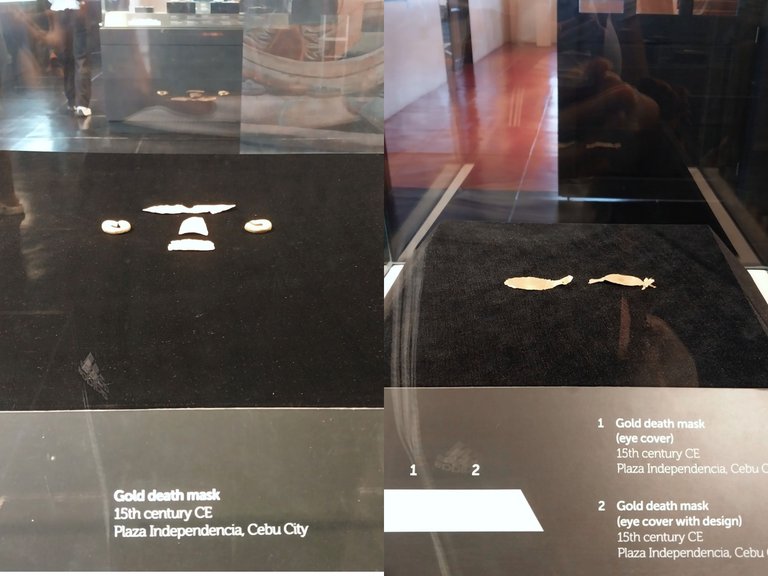
I was amazed by the brightness the gold emits. This shows the social status of a person at an early age. The early Bisayans believed that they would reach the heavens if they wore this on their death. It is said that the brightness of the gold drives the evil away as it blinds it.
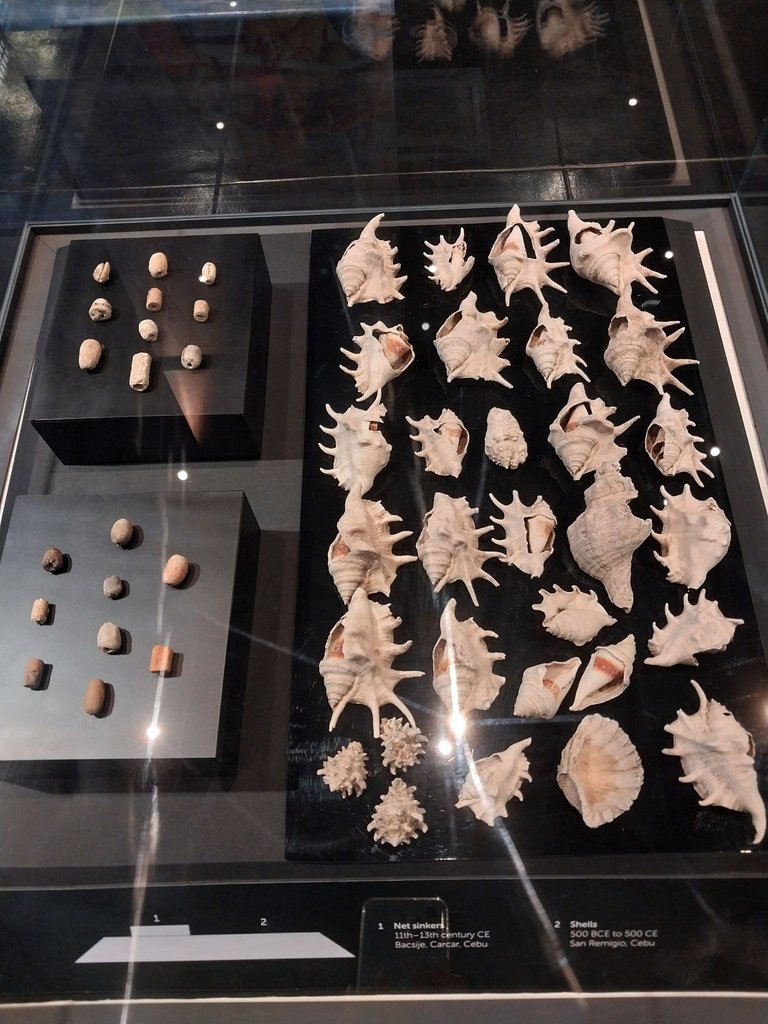
Exhibited in this area are the treasures found in Carcar and San Remegio, Cebu. The net sinkers were discovered between the 11th and 13th centuries CE and shells were found dated 500 BCE to 500 CE.
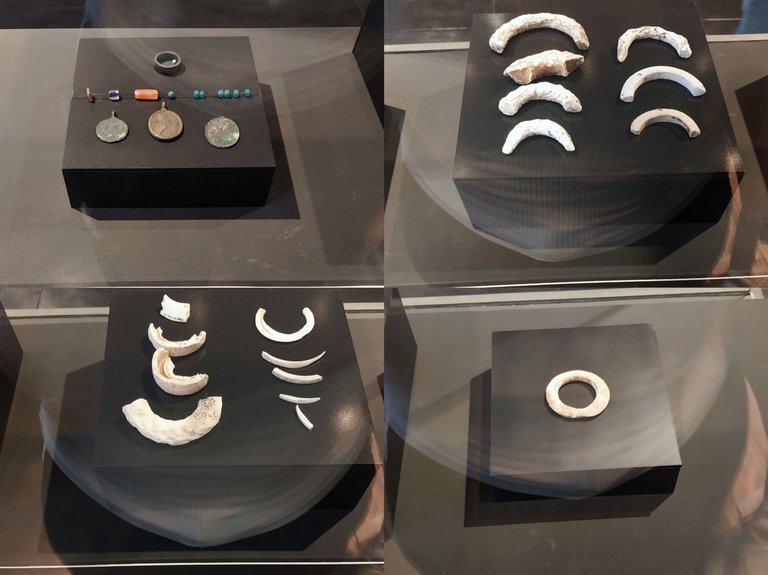
Showcased in the picture above are the pre-historic beads which include microbeads, square shell beads, glass beads, metal pendants with Christian insignias, shell ornaments, and shell bracelets.

In this area are some of the artifacts and treasures (mainly marble and dishes) in Cebu.

Here, you can see pots and jars dated back to different timelines which are found in the area of Cebu.
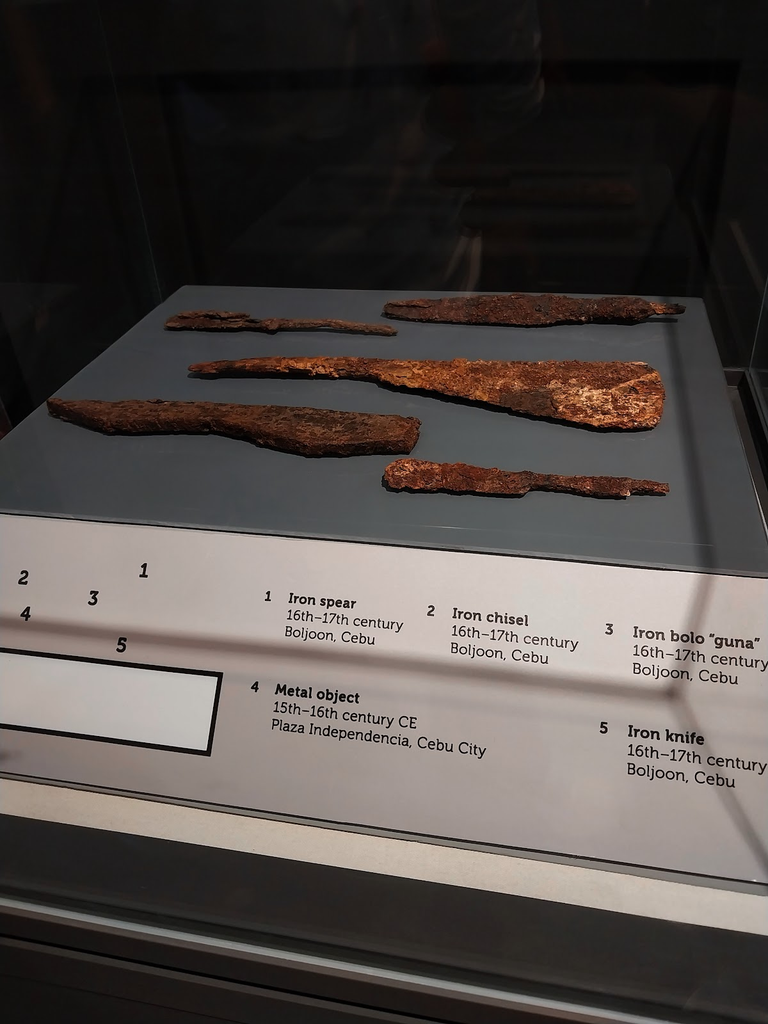
These are the weapons made from iron and metal discovered in Boljoon and Plaza Independencia Cebu and dated back to the 15th-17th century.
The next gallery we entered was the "Paglawig: Cultural Movement Across the Seas"
San Diego Galleon Model
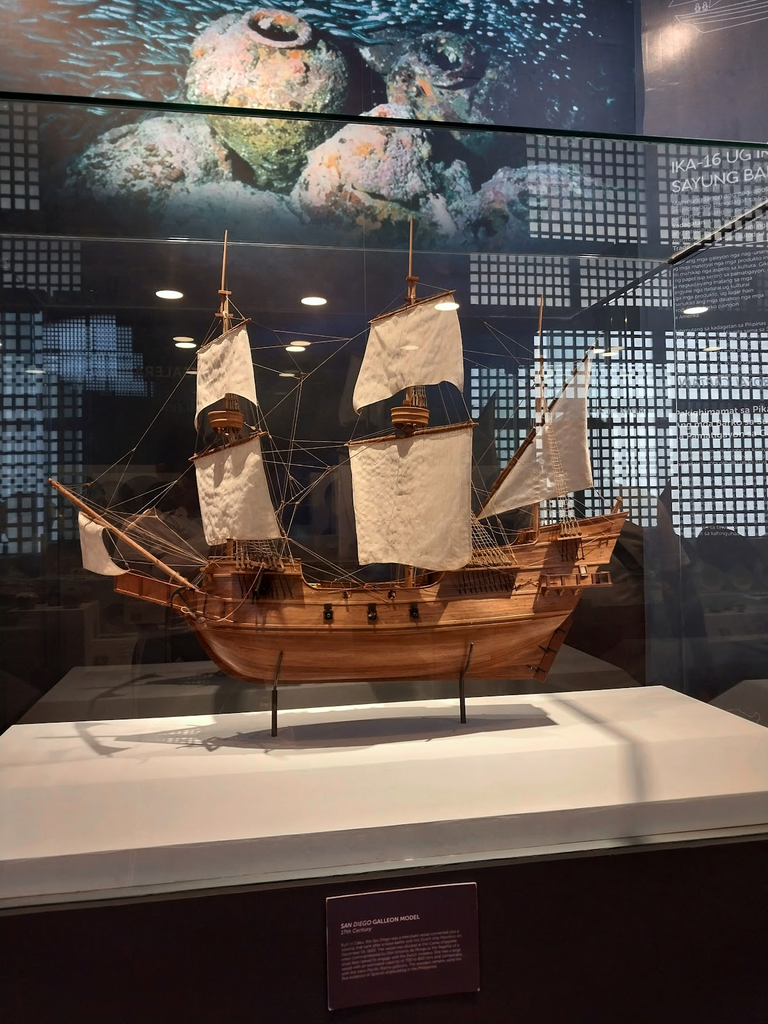
Dated in the 17th century, this was a large merchant vessel made into a warship that sank after a naval battle. The remains of the ship were the first evidence of a Spanish building in the Philippines.
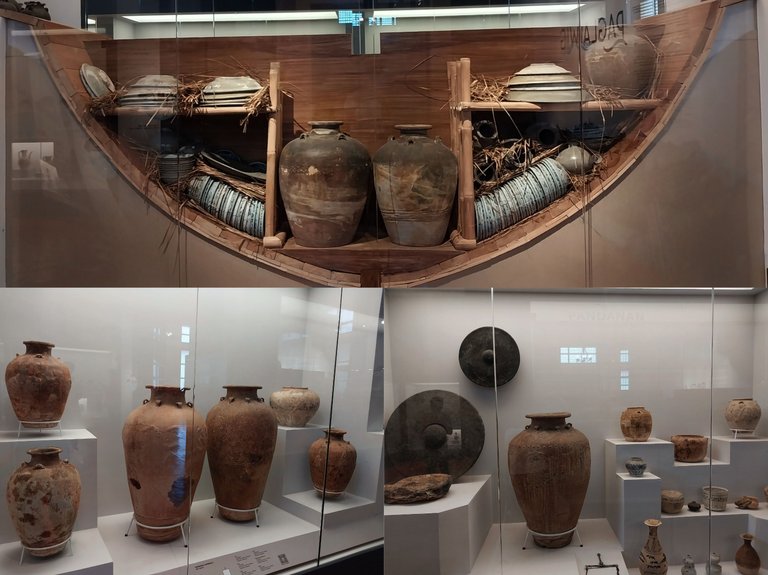
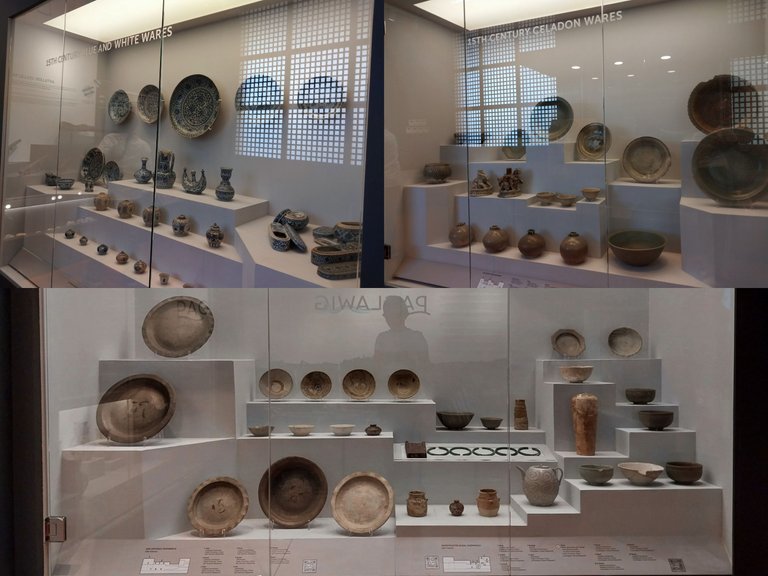
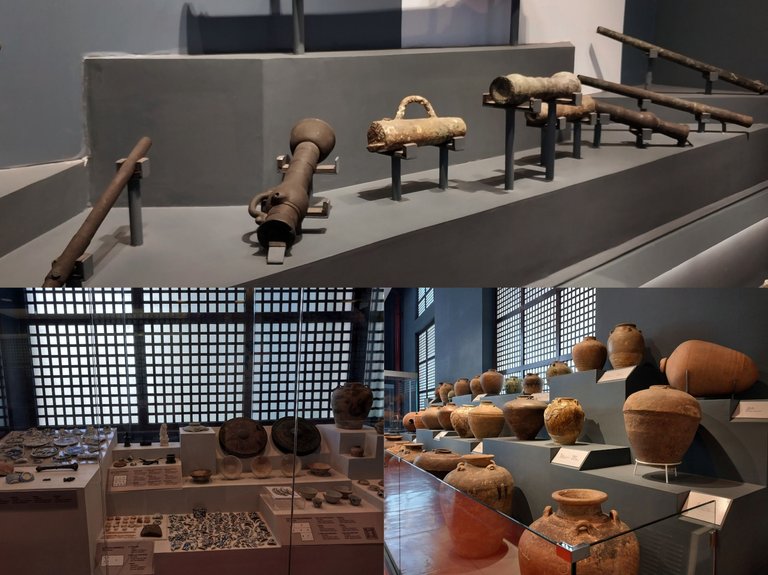
In this area, you can find the recovered antiques and treasures (jars, pet wares, stonewares, and weapons) from shipwrecks.

With the intricate design and all, these artifacts caught my attention. The design is interesting enough with all the dragon and those worm-like designs.
Anchor Stock
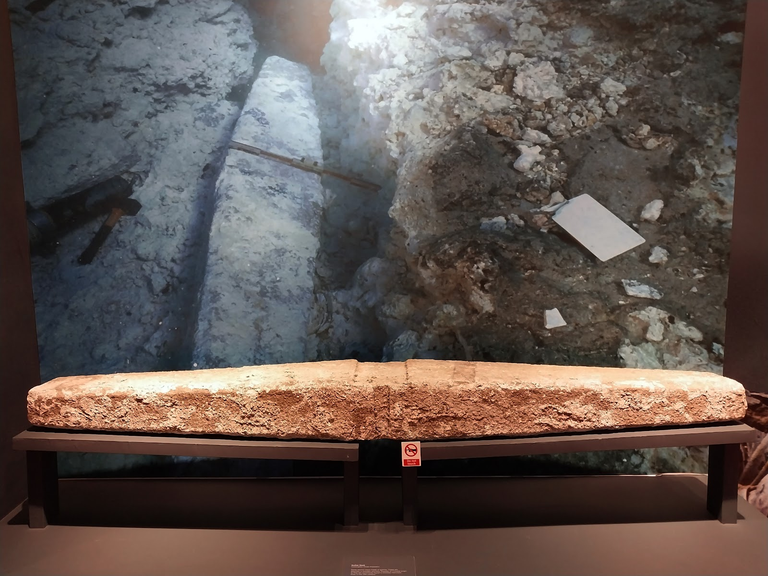
This stone is made out of granite attached to wooden anchors. It was indicated in the label that it was commonly found in Chinese Merchant ships in the 13th century.
Astronomical Ring
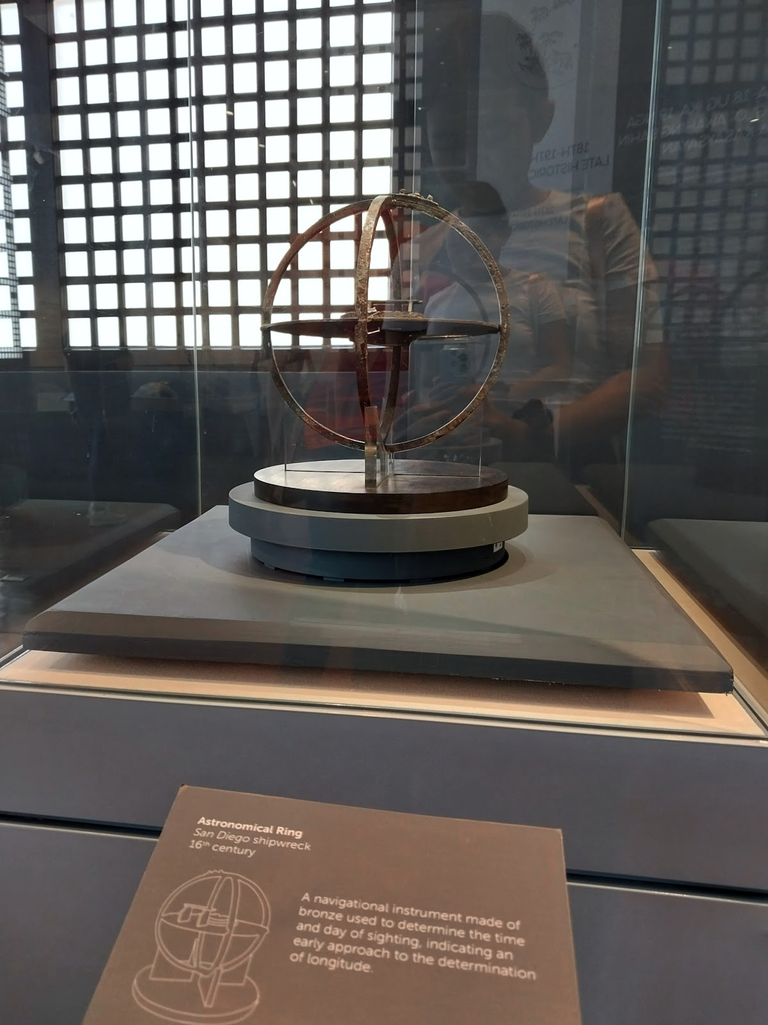
This is used as a navigational instrument to determine the time and day and the longitudes during the voyage of a ship.
Sextant and Slate
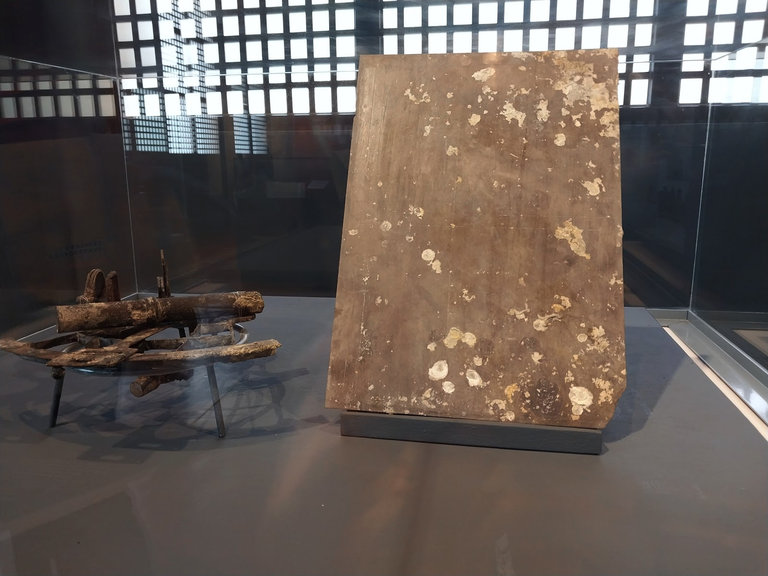
The sextant is labeled as the most important invention used by the navigators to measure the angles. Alongside is the slate which is somehow a logbook that holds the official record of the ship’s journey.
Astrolabe
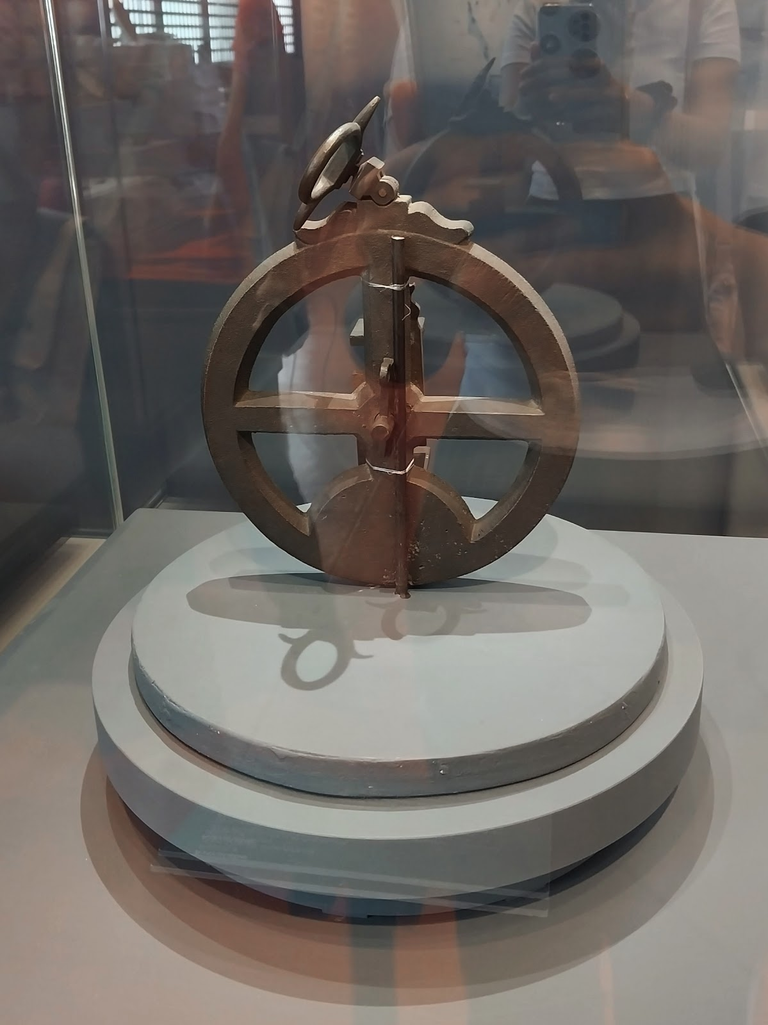
Displayed here is an Astrolabe which is thought to be a known historical astrolabe known in the world they use it to measure the angle between a star and a horizon.
The shipwreck stimulation area

This was indicated as the seabed environment based on the Griffin Shipwreck’s actual observation.
Fishing practices and implements
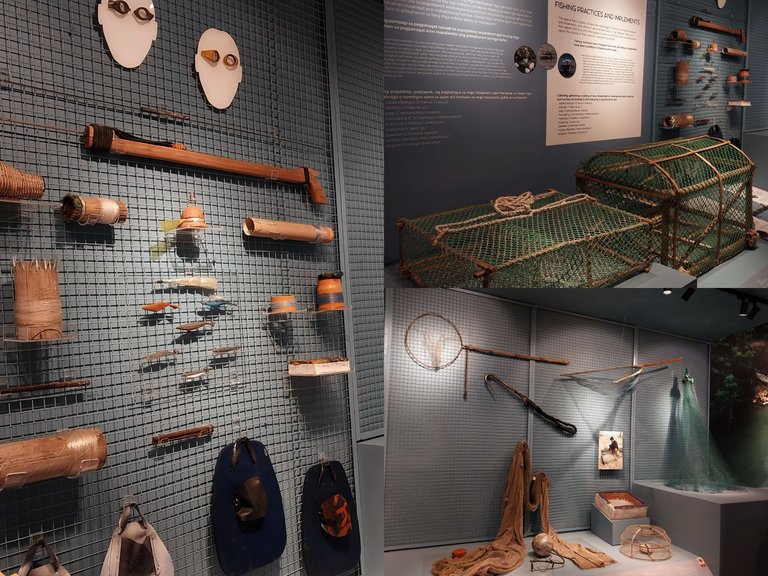
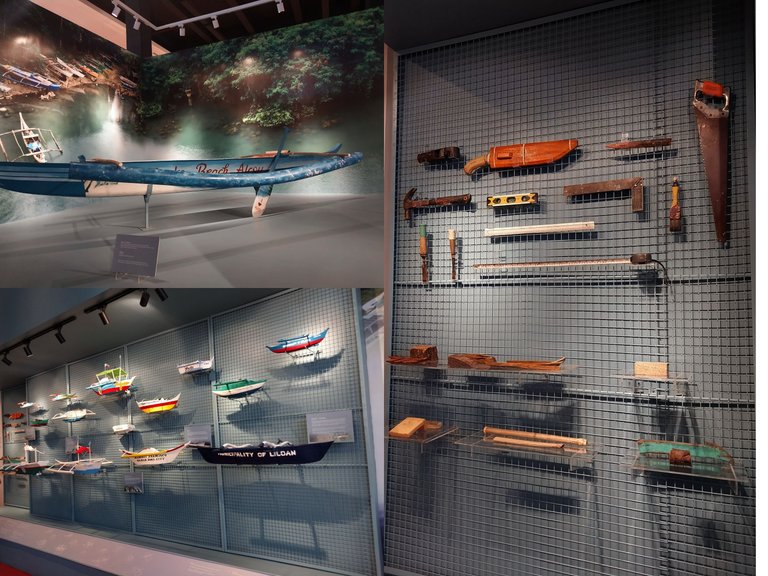
The fishermen or the mananagats usually use these things in their work. You have here the boat, the nets, hooks, and many more.
After touring the ground floor area, we proceeded to the second floor. We were greeted by the gallery with the theme: "The Philippine Center New York Core Collection of 1974"
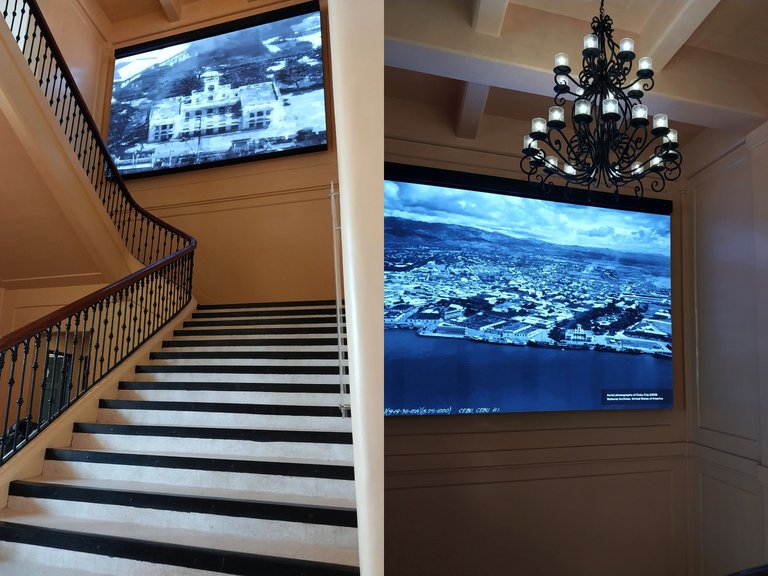
The grand staircase has this big TV screen displayed which shows the map of Cebu City from 1699.
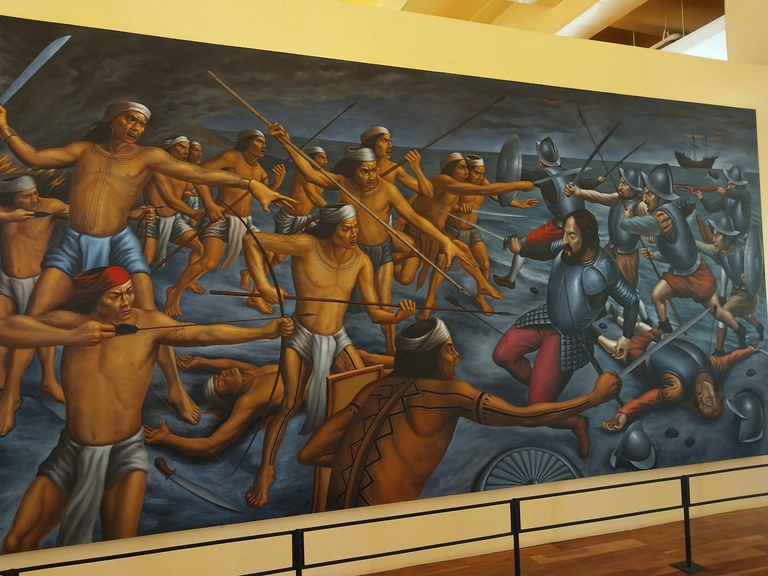
This canvas painting which illustrated the battle of the early Filipinos welcomed us as we set foot on the second floor.
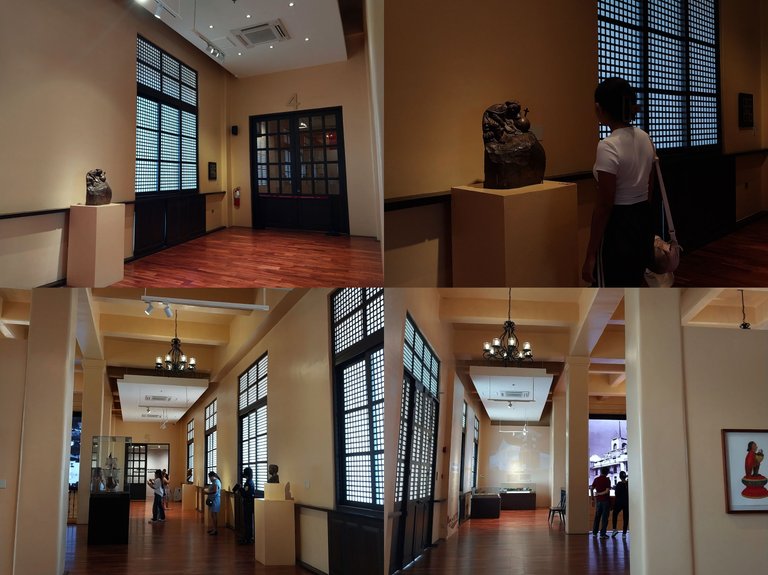
In the next area, you can find the National Fine Arts Collection; all are made by Filipino artists. Below are some of the works of Fidel Araneta and Claude Tayag:
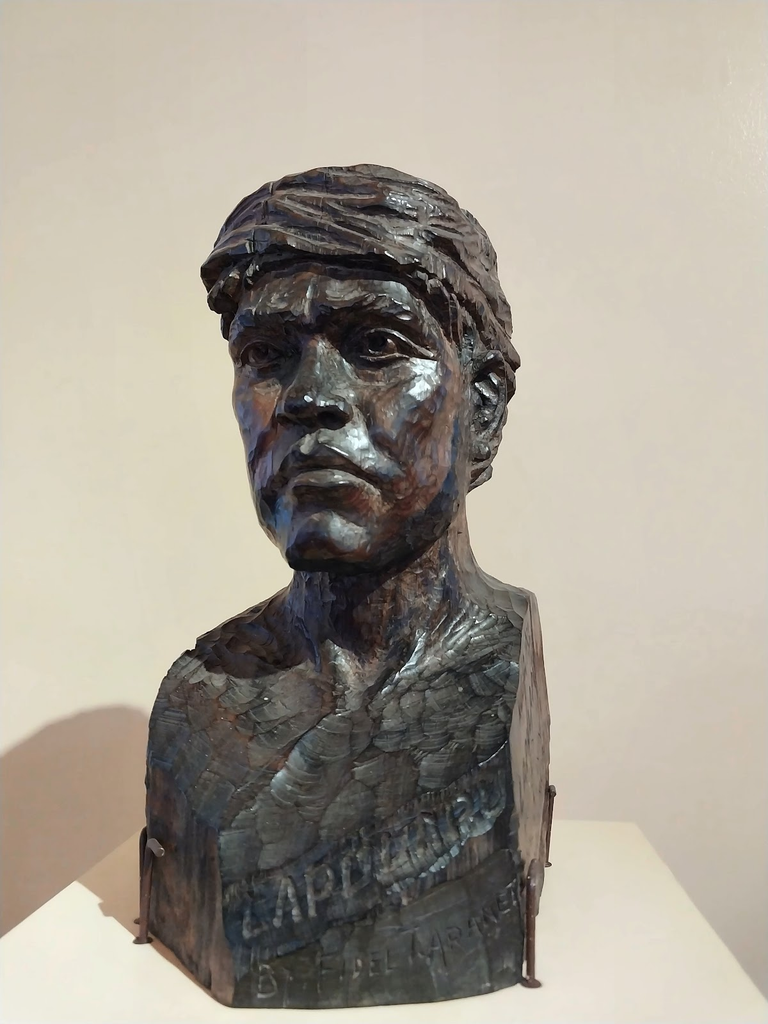
Sculpted statue of Lapu-Lapu (the 1st National Hero of the Philippines) by Fidel Araneta
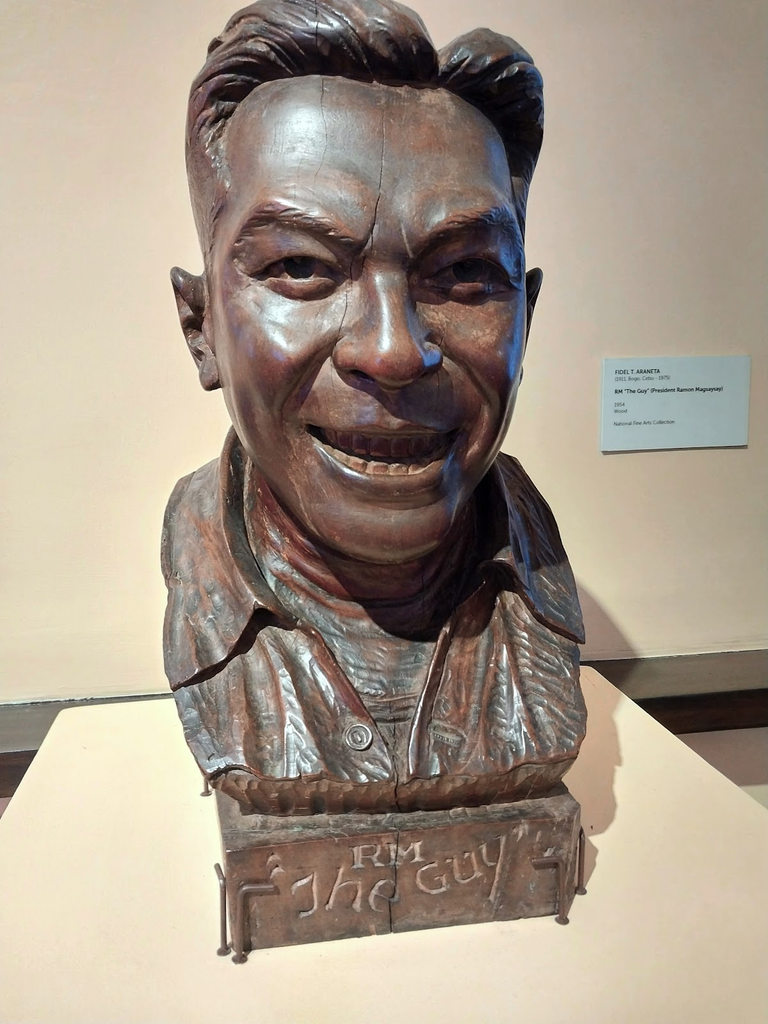
Ramon Magsaysay “The Guy” (17th President of the Philippines) by Fidel Araneta
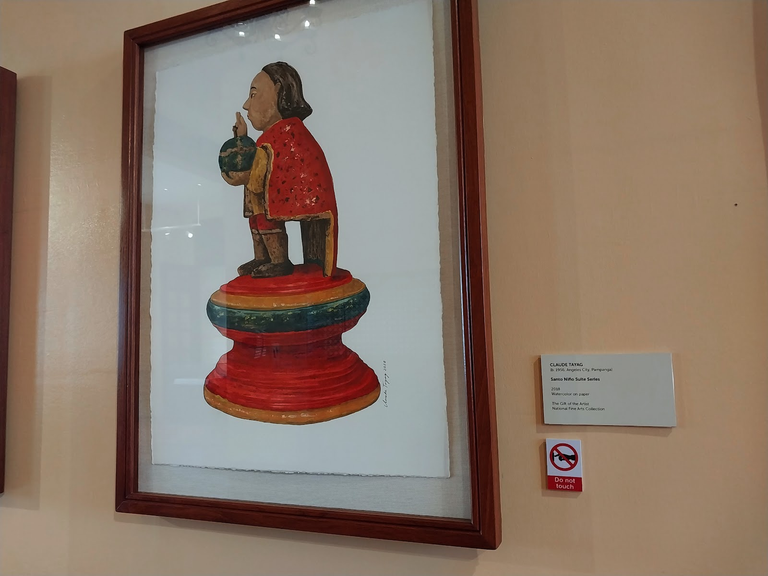
Canvas painting of Sto. Niño by Claude Tayag
The following shows the 3d model of the Economic Landscape of Cebu; the Aduana building or the Former Customs House; and the Boljoon Church.
Economic Landscape of Cebu
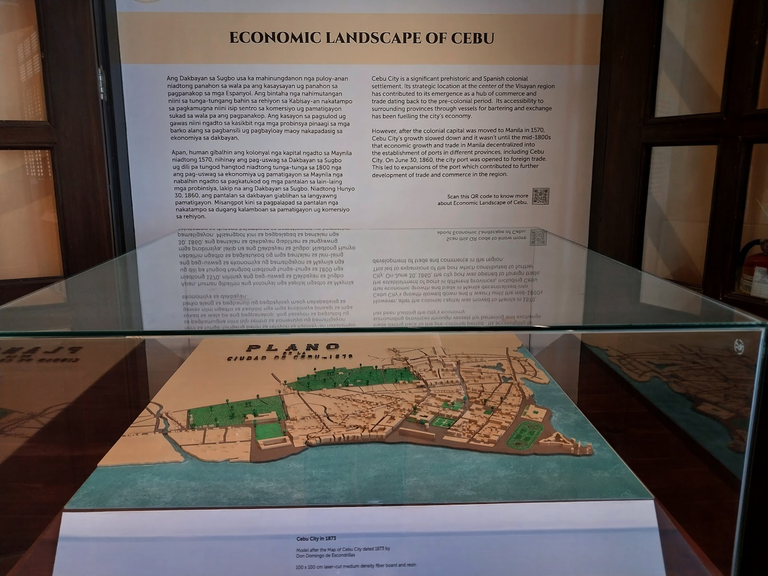
The former customs house which is now the National Museum of the Philippines - Cebu.
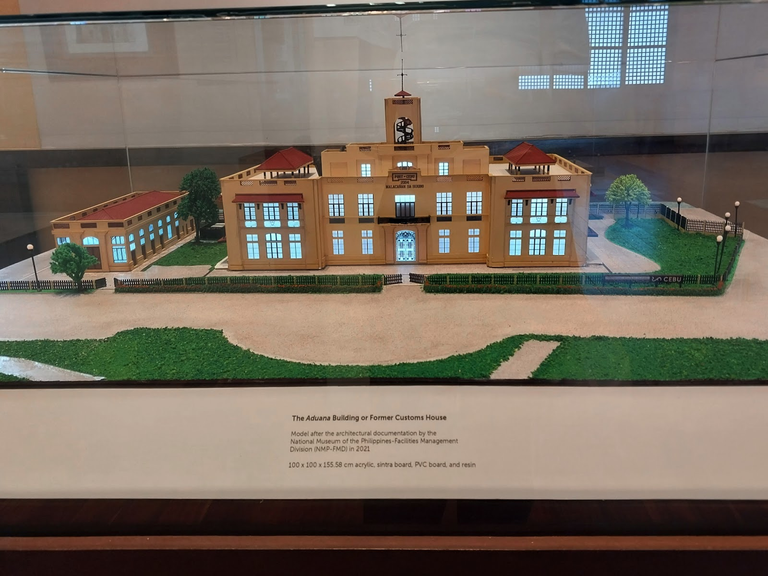
Nuestra Señora de Patrocinio Church (Boljoon Church)
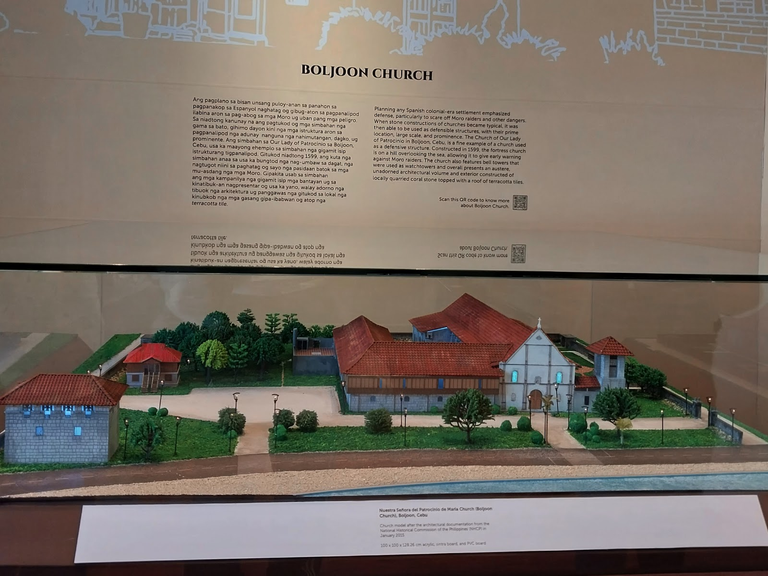
It has been declared a National Cultural Treasure and a National Historical Landmark.
In the next room, we entered the last but not the least gallery with the theme: “Ang Kamamugnaon ug Kinaadman ni Maestro Tinong”
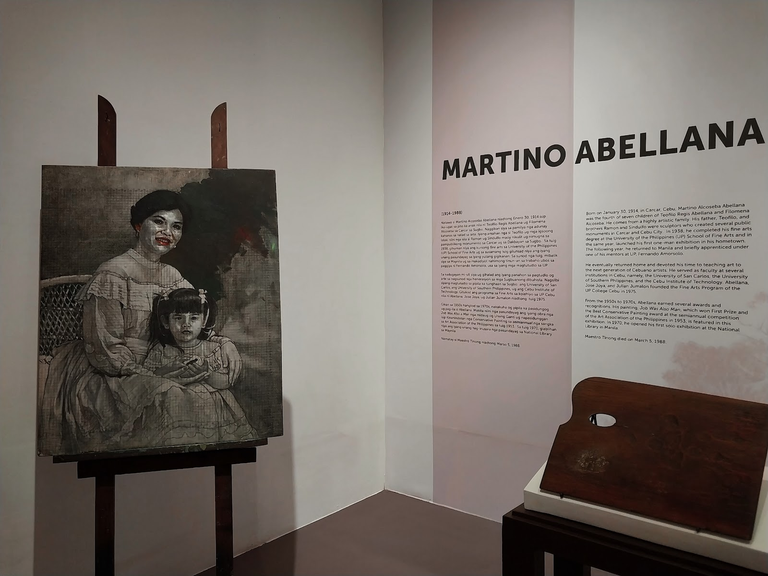
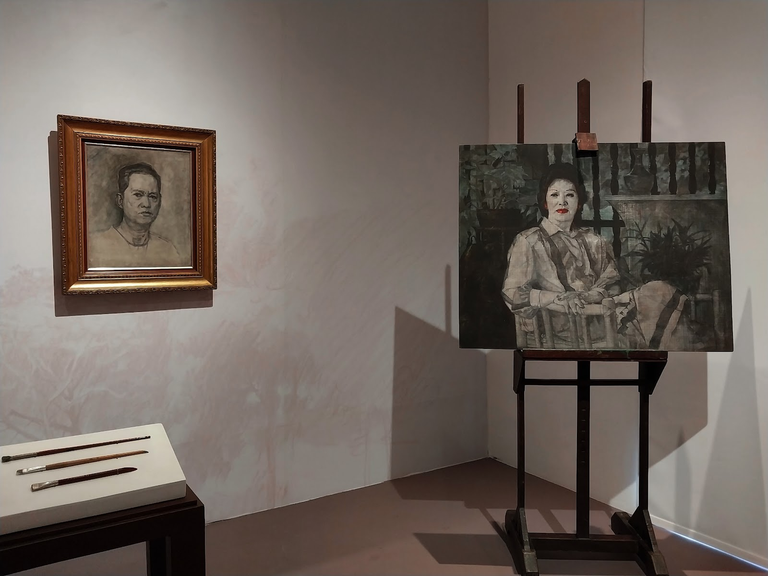
Martino Abellana or Maestro Tinong is renowned painter from Carcar, Cebu. His works include landscapes, portraits, or simply paintings that are practically pulsated with life.
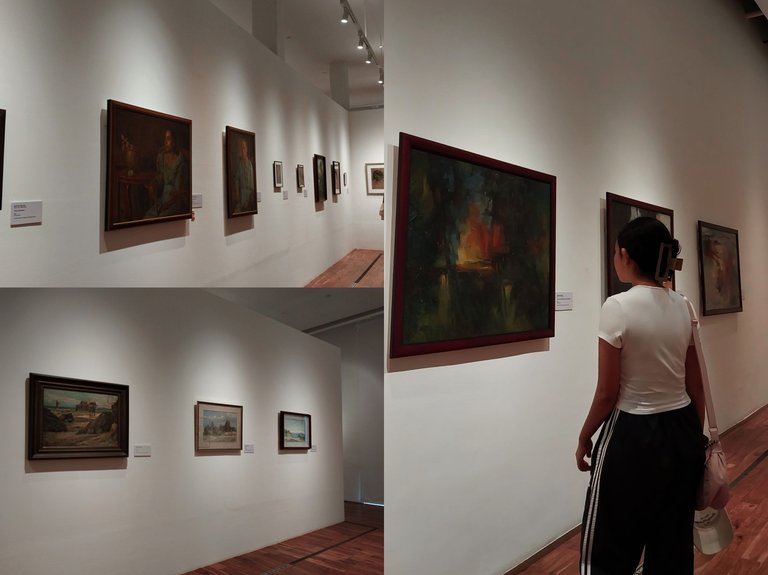
I’m no artist, but here are some close-up pictures of the paintings that I think are cool and interesting:
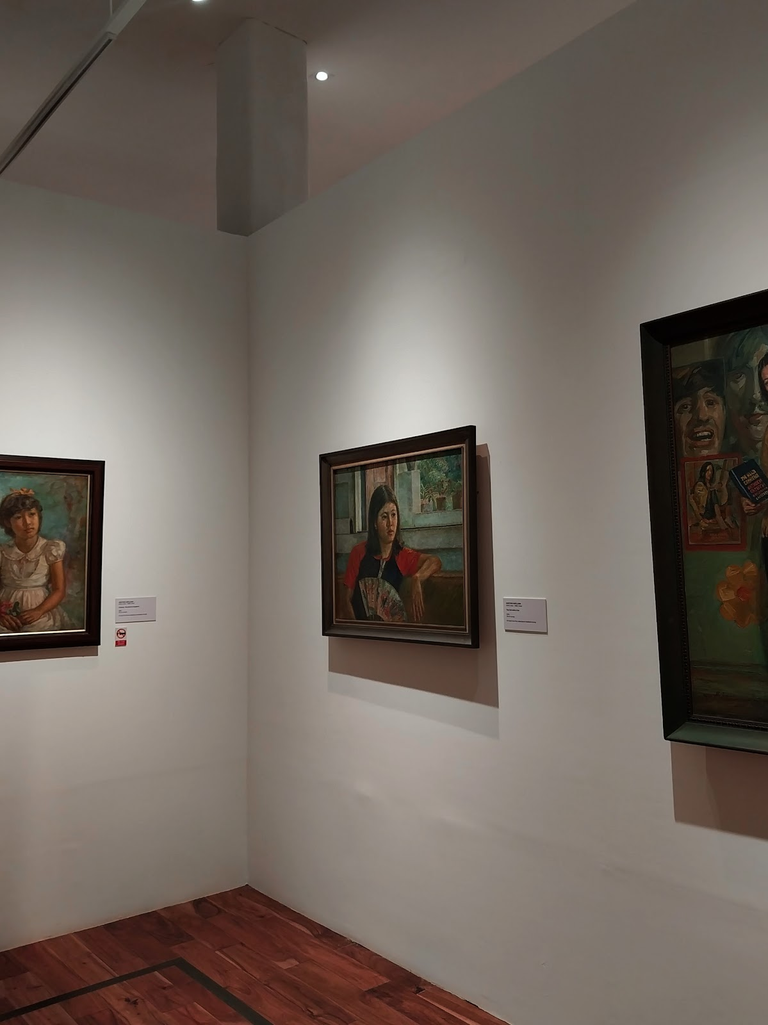
This portrait of this woman is just amazing. Maestro Tinong had perfectly copied and expressed the emotion of the woman.

These, I think are simple sketches which are inspired by the painters everyday living in the province.
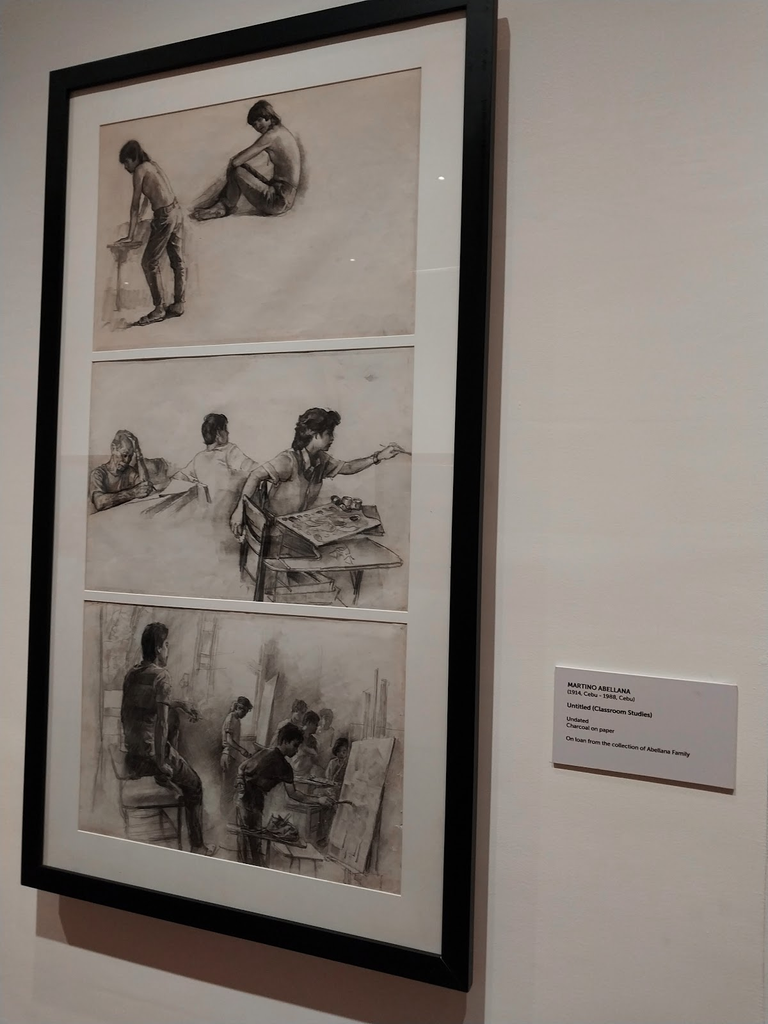
The beauty and drawback of a student's learning. This, in my point of view, is what is illustrated in classroom studies.

This painting of Jose Rizal, the national hero, stirred my emotions. Maestro Tinong drew his intellect and brilliance on the wall using a sword as an analogy in order to symbolize all that was noble about his acts.
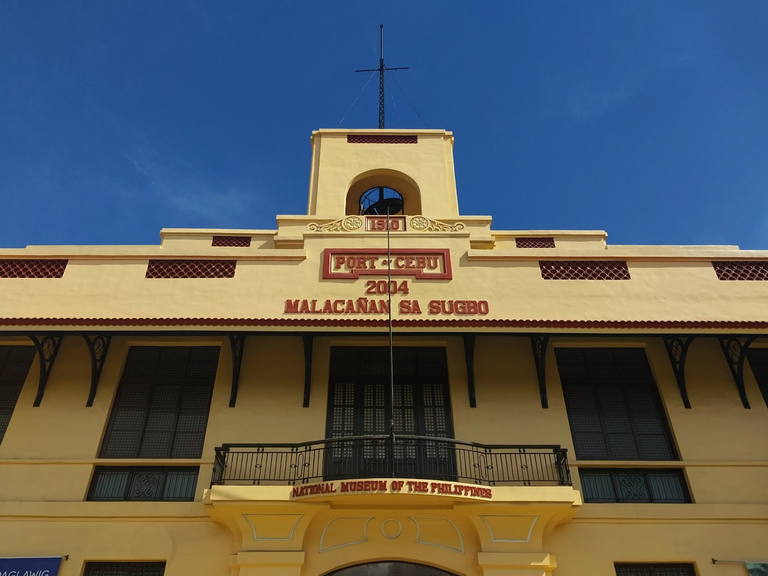
A museum is where you can travel back through time and learn about the past. This was the first time I visited an exhibit or a museum and it was truly an insightful experience.
It's a pleasure to have written this blog and share this new and remarkable experience with you. Here's to more exploring!
Hiya, @ybanezkim26 here, just swinging by to let you know that this post made it into our Honorable Mentions in Travel Digest #2267.
Your post has been manually curated by the @worldmappin team. If you like what we're doing, please drop by to check out all the rest of today's great posts and consider supporting other authors like yourself and us so we can keep the project going!
Become part of our travel community:
I appreciate it a lot!
This is a must-visit museum you can learn a lot by going there. Thank you for showing this to us.
I never knew until this time that a visit to a museum can be insightful. It's a pleasure to share this.
Congratulations, your post has been added to WorldMapPin! 🎉
Did you know you have your own profile map?
And every post has their own map too!
Want to have your post on the map too?
Wow! I haven't visited this museum. This is so amazing. I like everything there, I hope I can visit here someday.
Soon, @naymhapz. You should! the place does not disappoint.
Congratulations @nashhhh! You have completed the following achievement on the Hive blockchain And have been rewarded with New badge(s)
Your next target is to reach 300 upvotes.
You can view your badges on your board and compare yourself to others in the Ranking
If you no longer want to receive notifications, reply to this comment with the word
STOPi hope incan visit cebu agaib soon